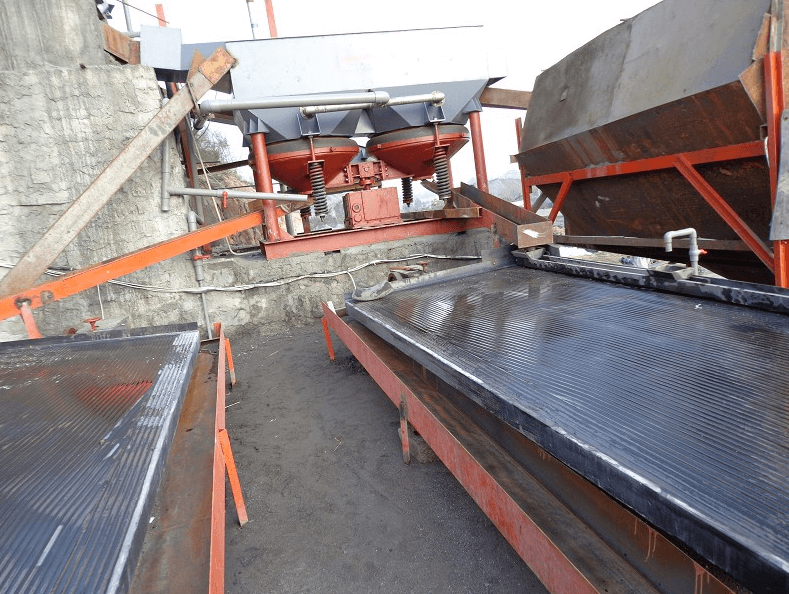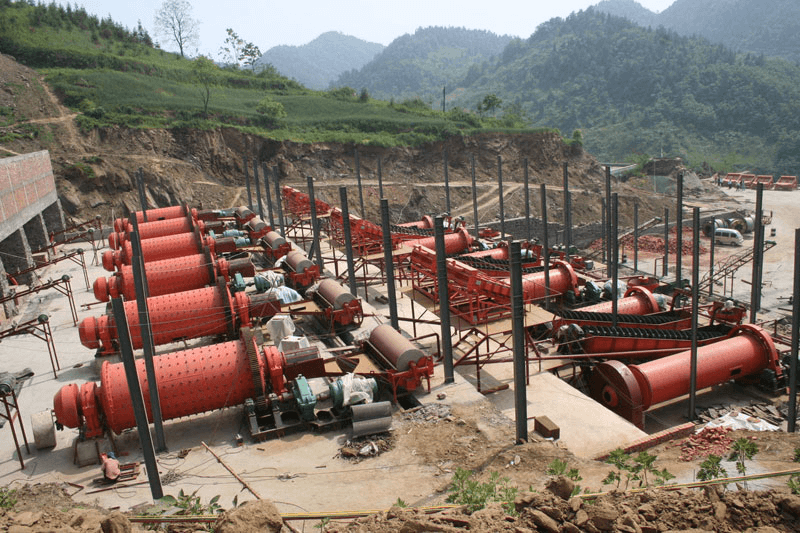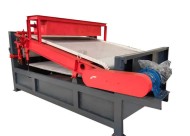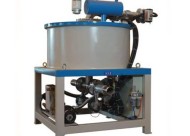Ball Mills
A ball mill is a sort of mining equipment used to grind and blend materials for use in mineral dressing processes, paints, pyrotechnics, ceramics and selective laser sintering. It takes a shot at the rule of impact and attrition, size decrease is finished by impact as the balls drop from close to the highest point of the shell.
Structure
A ball process comprises a hollow cylindrical shell rotating about its axis. The axis of the shell might be either horizontal or at a little angle to the horizontal. It is halfway loaded with balls. The crushing media is the balls, which might be made of steel (chrome steel), stainless steel, ceramic, or rubber. The internal surface of the cylindrical shell is generally fixed with an abrasion-resistant material, for example, manganese steel or rubber. Less wear happens in rubber lined mills. The length of the mill is roughly equivalent to its diameter.
Working of the Ball Mill
If there should arise an occurrence of constantly worked ball mill, the material to be ground is sustained from the left through a 60° cone and the item is released through a 30° cone to one side. As the shell rotates, the balls are lifted up on the rising side of the shell and after that they cascade down (or drop down on to the nourish), from close to the highest point of the shell. In doing as such, the strong particles in the middle of the balls and ground are lessened in measure by impact.
A ball mill productively worked plays out a wide range of mining equipment services. In little milling plants, where simplicity is most basic, it isn’t efficient to utilize more than single stage smashing, in light of the fact that the Steel-Head Ball or Rod Mill will take up to 2″ feed and granulate it to the coveted fineness. In bigger mining equipment plants where a few phases of coarse and fine crushing are utilized, it is standard to smash from 1/2″ to as fine as 8 mesh.
Numerous crushing circuits require regrinding of concentrates or average items to amazingly fine sizes to free the nearly related minerals from each other. In these cases, the feed to the ball mill might be from 10 to 100 work or even better.
Flotation Cell
A flotation process is one technique utilized all through the mining equipment industry to recover gold. It’s an extremely financially savvy strategy for concentrating gold and is an alluring process utilized for the updating of low-sulphide and unmanageable mineral for facilitating gold recovery treatment.
The procedure of mineral flotation concentrates on mining gold is an isolation procedure used to create a gold concentrate, copper. Furthermore, the flotation procedure in mining comprises of a few stages performed to create a gold concentrate, copper. Hardware utilized as a part of the flotation procedure by utilizing a stirred tank, and where the string of the tank is given wind airflow, so the gold and copper mineral concentrates will rise and float to the surface of the floatation tanks. Flotation is a procedure that relies upon the adhesion properties of specific minerals to air (hydrophobic), and to water (hydrophilic). To aid the flotation procedure by changing the surface properties of mineral particles should be added to the chemicals as Reagent Flotation
Froth flotation process
Froth flotation is a procedure used to specifically isolate hydrophobic materials from hydrophilic materials. Air bubbles can just stick to the coveted mineral particles on the off chance that they can displace water from the mineral surface, and can just keep on supporting the mineral particles at the surface on the off chance that they can frame a steady froth accomplished by utilizing floatation reagents.

Process
The flotation mining equipment process is presently utilized widely on gold metals, not just to concentrate the qualities without different processes, yet in addition in conjunction with amalgamation, gravity concentration, or cyanidation draining, to enhance recovery process and to give bring down treatment costs. In numerous cases, it is most beneficial to recover the gold as a from the concentrate, and either send this item to a smelter or amalgamate or cyanide the assembles at the mine.
Where the completed item does not need to be uniform, a ball plant might be worked in open circuit, however where the completed item should be uniform it is basic that the grinding mill be utilized as a part of shut circuit with a screen, if a coarse item is wanted, and with a classifier if a fine item is required. As a rule, it is alluring to work the grinding mill in shut circuit with a screen or classifier as higher productivity and capacity are acquired. Regularly a plant utilizing steel rods as the grinding medium is suggested, where the item should have the base measure of fines as poles give an all the more almost uniform item.
Jig Concentrators

The particles would typically be of a comparative size, frequently crushed and screened before being nourished over the jig bed. There are numerous variations in design; anyway, the fundamental standards are steady: The particles are acquainted with the jig bed (for the most part a screen) where they are pushed upward by a pulsing water section or body, bringing about the particles being suspended inside the water. As the pulse dissipates, the water level comes back to its lower beginning position and the particles by and by settle on the jig bed.
As the particles are presented to gravitational energy while in suspension inside the water, those with a higher particular gravity (thickness) settle speedier than those with a lower include, coming about a concentration of material with higher thickness at the base, on the Jig bed. The particles are currently concentrated by density and can be extricated from the Jig bed independently. In the mining of most substantial minerals, the denser material would be the coveted mineral and the rest would be disposed of as floats (or tailings).
There are a few minerals, remarkably coal, that are lighter (bring down in thickness) than the encompassing rock and in such cases the procedure of extraction would work backward, i.e. the coal would settle on top with the stone underneath (on the jig bed). There are a few plans and techniques for extraction from the jig bed.
LATEST PRODUCTS
Heavy Plate Feeder
Capacity: 100-240 m3/h Power: 15-45 kW Speed: 0…
Plate Magnetic Separator
【Capacity】8-35 t/h 【Power】1.5-3 kW 【Applic…
Slurry Magnetic Separator
【Capacity】10-100 m3/h 【Feeding Material Densi…










